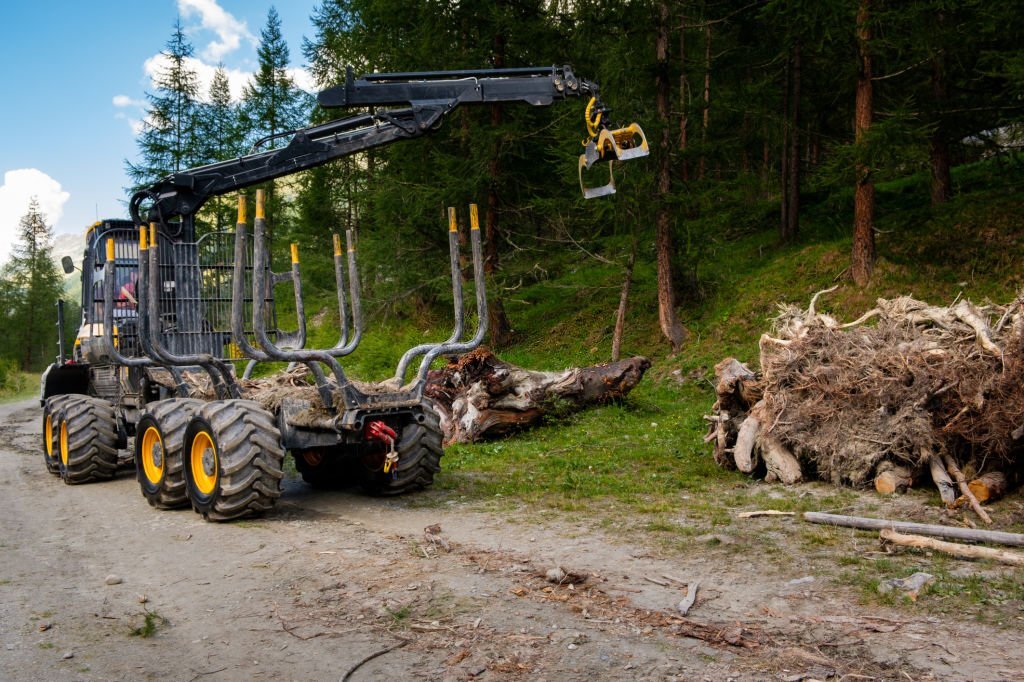
Introduction
The logging industry has seen significant advancements in recent years, with modern logging equipment incorporating innovative features and designs to improve efficiency, safety, and environmental sustainability. From precision GPS technology to telemetry systems, hybrid power options, and ergonomic designs, these innovations are revolutionizing the way forests are managed and timber is harvested. This article explores the cutting-edge features and designs found in modern logging equipment, showcasing how these advancements are reshaping the industry and fostering responsible forest management.
GPS Technology in Logging Equipment
1.1 Precision Mapping and Navigation
GPS technology has become a game-changer in modern logging equipment, providing operators with real-time access to precise maps and navigation. Integrated GPS systems enable loggers to map out logging sites, identify optimal paths, and plan harvesting operations with exceptional accuracy.
1.2 Benefits
- Increased Efficiency: GPS-enabled equipment allows operators to optimize log harvesting routes, reducing travel time and fuel consumption.
- Reduced Environmental Impact: By minimizing unnecessary movements, GPS technology helps preserve delicate ecosystems and biodiversity.
Telemetry Systems for Enhanced Performance
2.1 Remote Monitoring and Diagnostics
Telemetry systems in logging equipment enable remote monitoring and diagnostics, allowing operators and maintenance teams to access vital performance data in real time. These systems transmit information about engine health, fuel consumption, temperature, and other critical metrics.
2.2 Benefits
- Proactive Maintenance: Telemetry systems enable predictive maintenance, preventing potential equipment failures and reducing downtime.
- Data-Driven Decision Making: Access to real-time performance data helps optimize equipment use and operational efficiency.
Hybrid Power Options
3.1 Eco-Friendly Logging Machinery
The integration of hybrid power options in logging equipment offers eco-friendly alternatives to traditional diesel engines. Hybrid systems combine internal combustion engines with electric motors, reducing emissions and fuel consumption.
3.2 Benefits
- Lower Environmental Impact: Hybrid power options contribute to reduced greenhouse gas emissions and a smaller carbon footprint in logging operations.
- Increased Fuel Efficiency: Electric motors supplement the power output of the engine, resulting in improved fuel efficiency and cost savings.
Ergonomic Designs for Operator Comfort
4.1 Operator-Focused Cabin Designs
Modern logging equipment prioritizes operator comfort and safety through ergonomic cabin designs. Features like adjustable seats, climate control, and noise reduction measures enhance the operator’s experience during long and demanding shifts.
4.2 Benefits
- Operator Well-being: Ergonomic designs reduce fatigue and physical strain on operators, improving concentration and decision-making abilities.
- Increased Productivity: Comfortable operators are more likely to perform at their best, leading to increased productivity and efficiency.
Automation and Robotics
5.1 Automated Felling and Processing
Automation and robotics are revolutionizing the logging industry by enabling automated felling and processing operations. Autonomous equipment, guided by advanced algorithms and sensors, can perform tasks like tree felling, delimbing, and bucking with high precision.
5.2 Benefits
- Improved Safety: Automated equipment reduces the risk of accidents, as operators are distanced from hazardous operations.
- Enhanced Efficiency: Automation allows for continuous operation, minimizing downtime and increasing productivity.
Sustainable Materials and Lightweight Composites
6.1 Use of Sustainable Materials
In response to growing environmental concerns, modern logging equipment manufacturers are incorporating sustainable materials in their designs. This includes the use of bio-based plastics and recycled materials.
6.2 Lightweight Composites
Lightweight composites are increasingly being employed in logging equipment to reduce overall weight without compromising strength and durability. Lighter machines can minimize environmental impact and improve fuel efficiency.
Conclusion
The logging industry is experiencing a transformative period, with modern logging equipment incorporating innovative features and designs to enhance efficiency, productivity, and environmental sustainability. GPS technology, telemetry systems, hybrid power options, ergonomic designs, and automation are just a few examples of cutting-edge innovations reshaping the industry. As logging companies continue to adopt these advancements, they are promoting responsible forest management and fostering a more sustainable future for the logging industry. By embracing these modern technologies and practices, the logging sector can ensure the responsible use of forest resources while meeting global demands for timber and wood products.

